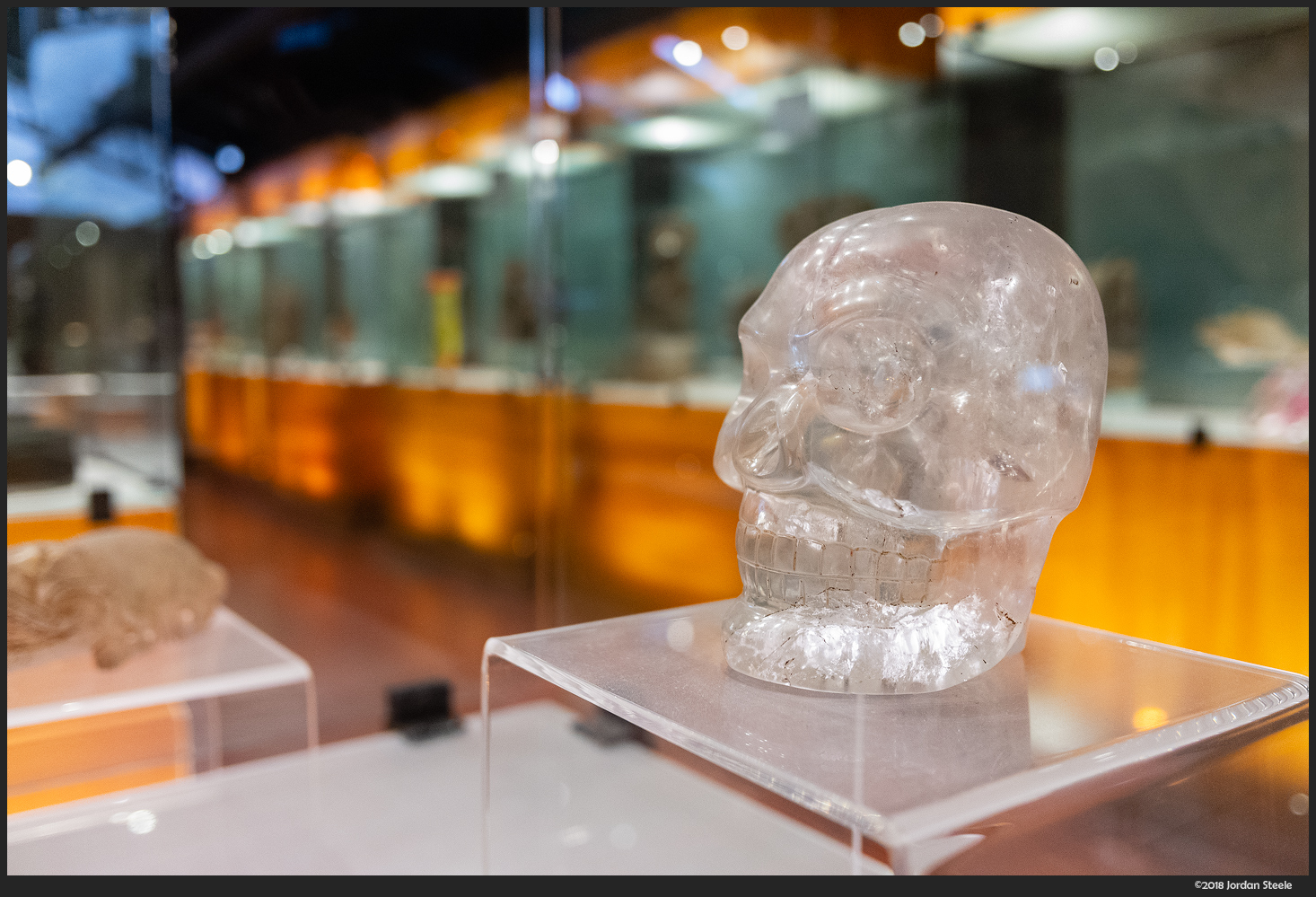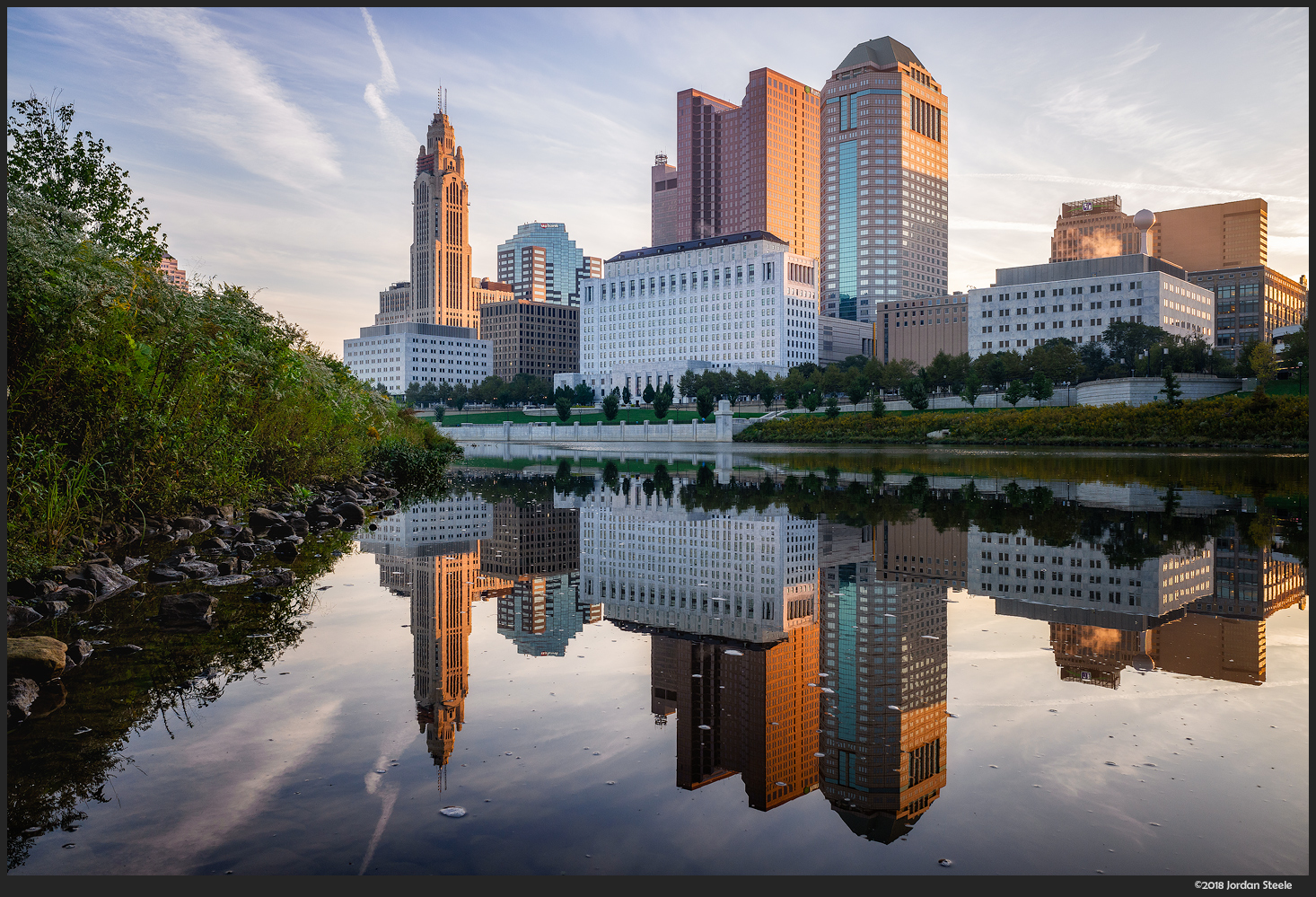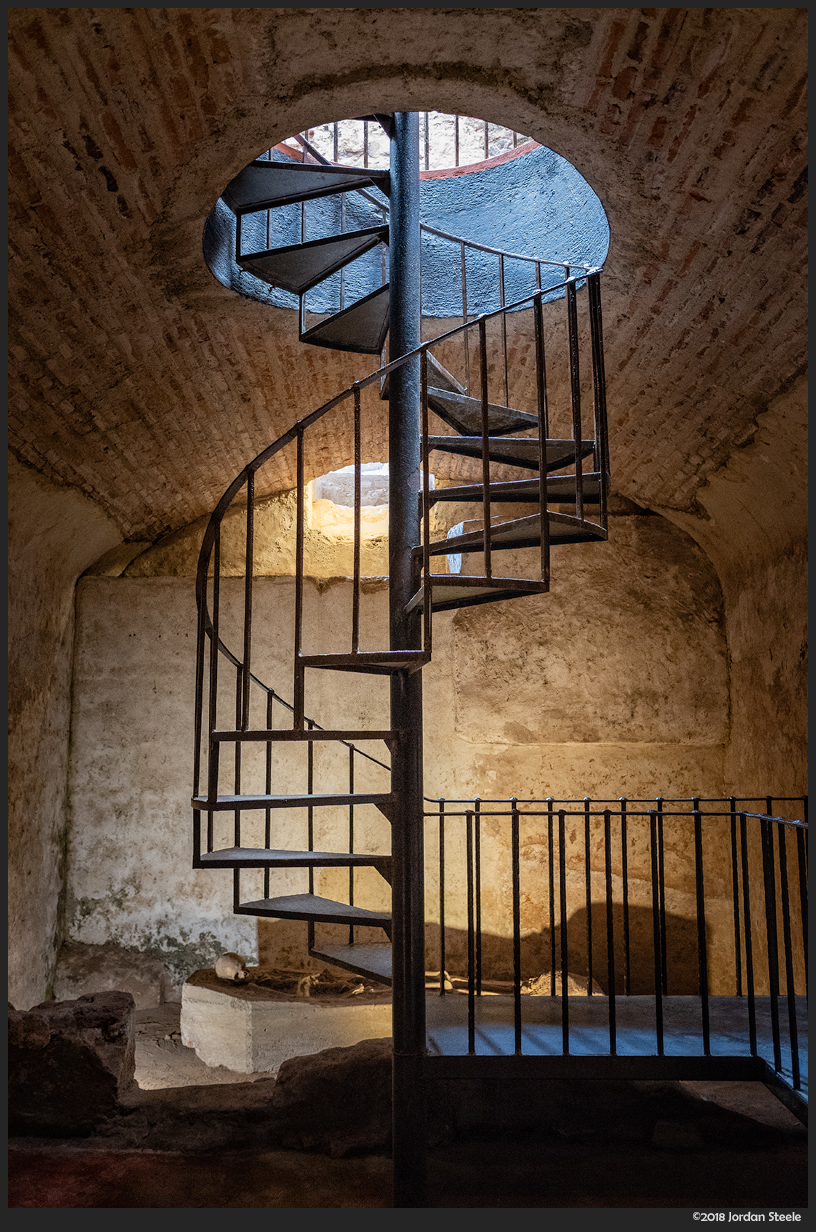Image Quality
The XF10 reuses the sensor from the X-T100 and the lens from the X70, so both of these things are somewhat known quantities. I talked about the lens in my X70 review, but I have some new thoughts with its performance on the XF10.
Lens Quality
The 18.5mm f/2.8 lens used on the XF10 is exceptionally slim, and that can come with some compromises. However, for the most part, the lens is quite nice.
Sharpness
With regards to image sharpness, the XF10 lens will vary somewhat depending on your subject. For many subjects, you will notice very sharp results across the frame, even into the corners. On flatter subjects, you’ll notice some softening of detail at the edges and corners of the frame, and that’s because the lens on the XF10 shows quite a bit of field curvature. When focused far away, the edges of the frame will be best focused at around 5-10 feet from the camera. Focusing at infinity with all distant detail will show softer edges when focused at the center, or a softer center with sharp edges when focused using the edges. However, for most natural compositions, there is some closer detail near the edges, especially indoors, and for these subjects, the field curvature actually helps improve the overall image quality.
When I first tested the XF10, I was a bit disappointed with the degree of field curvature, but in actual use over the next week or two, I found that images were quite sharp most everywhere, and that a lot of subjects actually benefited from this quirk. It’s definitely something to be aware of when you’re shooting, but it’s not a major issue in my experience.
The lens can also focus quite close up, and sharpness in the center of the frame stays at a very high level, though the corners become rather terrible when shooting at very close focus distances.
The lens begins sharp across most of the frame at f/2.8, but the edges and corners are definitely softer here, even when accounting for field curvature. Stopping down to f/5.6 or so brings the edge sharpness up considerably and yields very nice results across the image frame.
Bokeh
The 18.5mm f/2.8 lens on the XF10 isn’t going to blow away backgrounds unless focused very close up, but the bokeh produced by the camera is quite nice. Blur discs are relatively even and generally round, and there’s very little nervousness to the blur as well. In all, I found the rendering to be quite pleasing. There can be a touch of a bright ring outline on specular highlights, but it’s not overly distracting.

Color, Contrast and Aberrations
The lens on the XF10 produces images with good contrast straight from wide open. The color profile is perhaps a bit muted, but with Fuji’s excellent color science, good color results can easily be had.
Chromatic aberration is fairly well controlled, with a touch of lateral CA visible and easily corrected, and a touch of purple fringing can present in high contrast areas from time to time, but overall performance here is quite good for such a flat lens. Flare resistance is good, but not exceptional. There is a bit of pincushion distortion that can be seen in some shots with very straight lines, but is otherwise fine.

Sensor Quality
The XF10 has the same 24-megapixel sensor as the recent X-T100. It’s a sensor that is based on X-Trans III sensor used in the X-T2 and X-T20, but uses the more standard Bayer color filter array, rather than Fujifilm’s signature X-Trans array. The result is a sensor that has similar levels of detail, but without some of the foliage artifacts that can be caused by the X-Trans color filter array. However, it can show some moire in the right circumstances and has a different noise profile.
Dynamic Range
If you’ve used Fujifilm’s third generation processors, either in the X-T100, or even their X-Trans siblings in the X-T2 or X-T20, you’ve got a good idea of the dynamic range available from the XF10 sensor. The XF10 does a very nice job maintaining detail and the shadows while providing good highlight control as well. While the range displayed on the rear LCD is somewhat limited, when bringing RAW files into play, there is about a stop and a half of highlight recovery available and a lot of detail that can be pushed out of the shadows, though at the expense of noise. While it won’t match a modern full-frame body for dynamic range, it is right in line with other APS-C cameras in use today.
The shot below shows some of the excellent dynamic range of the XF10 sensor. While overcast conditions typically do not pose too much of a problem for any modern camera, this framing utilized an arched hallway as a window to the main scene, which was unlit and rather dark. I pushed the shadows here around two stops, while pulling back the brightest highlights in the clouds to the left of the volcano in the distance. The file handled these adjustments with ease, bringing plenty of detail in to the white arches, and all the cloud detail in the clouds.

Detail and Noise
The Bayer filter array on the XF10 sensor has an effect on both the detail levels and the perceived noise when compared to its X-Trans brethren. The detail of the sensor in most situations is effectively identical to what is available on something like the X-T2. However, the XF10’s Bayer array doesn’t suffer from the false detail ‘watercolor effect’ that can sometimes occur on Fuji’s X-Trans sensors when shooting foliage or grass.

Noise levels are fairly good and are in line with most APS-C sensors from 2018. However, it does show more noise overall than the X-Trans sensors of the same technology, especially color noise. Images are quite clean at lower ISOs, though even at ISO 200, there can be some very light luminance noise when adding contrast to an image. Noise remains well in control through ISO 1600, and ISO 3200 is very usable. ISO 6400 can be used with proper noise reduction, even for print, but ISO 12,800 gets to be a bit much for anything other than web use.
Overall image quality of the XF10 is on a high level, though with the caveats that I’ve discussed above. It’s not a perfect lens, and the sensor, while good, doesn’t break any new ground either. However, when you have this level of image quality in a super tiny camera, it makes for a great option for travel, and I was very pleased with the images I was able to get out of the XF10.





Leave a Reply